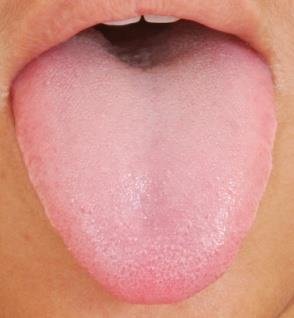
Oral hygiene factors in the tongue, which is unfortunate, since the organ is more responsible for our well-being than many would imagine. It aids in one’s digestion and speech but is more importantly a good measure of someone’s state of health. This is made easier by the use of tongue health chart that enables a person to evaluate the health status of the tongue.
The Anatomy of The Tongue
Before looking much into the tongue health chart, it is also very important to know the parts of the tongue. The tongue is a more complex structure, as it is made up of a muscle – yes, visualised in the figure, the tongue is the pink-ish muscular organ which is lined by moist mucous membrane. Its surface is dotted with taste buds, which allows us to experience different flavours. The colour, texture and surface characteristics of the tongue vary a lot and is an external sign of health.
The Significance of the Tongue Health
The state of the tongue should be taken care of for several reasons:
- Taste: Food is fondly referred to as a tasty treat; the tongue plays an important role in tasting food which impacts appetite and nutrition.
- Digestion: It possesses both physical and chemical means of breaking down food to part-able sizes.
- Articulation: One cannot pronounce words properly without the tongue; thus, it is essential for communication.
- Health Indicator: The way the tongue looks may correlate with many diseases from deficiency diseases to diseases affecting every system or organ in the body.
Tongue Health Chart
The tongue health chart is used to create a general picture of the health of tongue. This means different colours, textures and features can indicate different health issues
- Colour:
- Pale tongue: A pale or whitish tongue may indicate that the person is suffering anemia or malnutrition.
- Red tongue: An orange or bright red tongue points to b12 deficiency or folate deficiency or it may signify fever or inflammation.
- Purple tongue: blue or purple implies some sort of circulation problem or cardiovascular disease.
- Yellow tongue: yellow colour means the skin is dehydrated or infected with bacteria associated with intestinal issues.
- Texture:
- Smooth tongue: it may indicate poor diet, or lack of haemoglobin or B vitamins.
- Rough tongue: accumulation of bacteria can contribute to a rough texture, or may bring irritants such as tobacco use, geographic tongue or oral thrush.
- Cracked tongue: mostly it is a harmless genetic variant but can also indicate dehydration or deficiency in certain vitamins.
- Coating:
- White coating: An opaque whitish deposit may indicate yeast infection or neglect of oral hygiene
- Brown or black coating: usually happens because of smoking or poor oral hygiene
- No coating: shiny pink tongue implies good oral health and hydration.
- Size and shape:
- Swollen tongue: A puffy or swollen tongue might point to water retention or a problem with your thyroid.
- Thin tongue: your tongue looking thin could mean you need more water or that you have low energy levels and not enough blood that happens if you are anemic.
- Teeth marks on edges: it is known as scalloping and it might show that your body is not breaking down food well or taking the nutrients in. It could also be linked to feeling stressed out or anxious.
Maintaining tongue health
Taking good care of your tongue is a very essential part of keeping your mouth healthy. Brush your teeth often and use a tongue scraper to get rid of bacteria and keep your breath fresh. Drink plenty of water, eat a balanced and healthy food, and never miss vitamins to help your tongue stay in good shape, stay away from smoking and drinking too much alcohol as these can make your tongue look weird or dry. Must see your dentist so that he can tell you if any strange change happens with your tongue early on.
Conclusion
The tongue health chart serves as an interesting tool to help people manage their oral health. It provides a valuable glimpse into your body’s overall wellbeing. By examining the colour, coating, texture and shape of your tongue, you may detect early indicators of imbalances or health issues. However, it is essential to keep in mind that tongue health charts represent only one component of the larger picture. Always consult a medical professional if your observe any concerning or persistent symptoms. Staying informed and monitoring your tongue is indeed a straightforward method to maintain a closer watch on your health.



